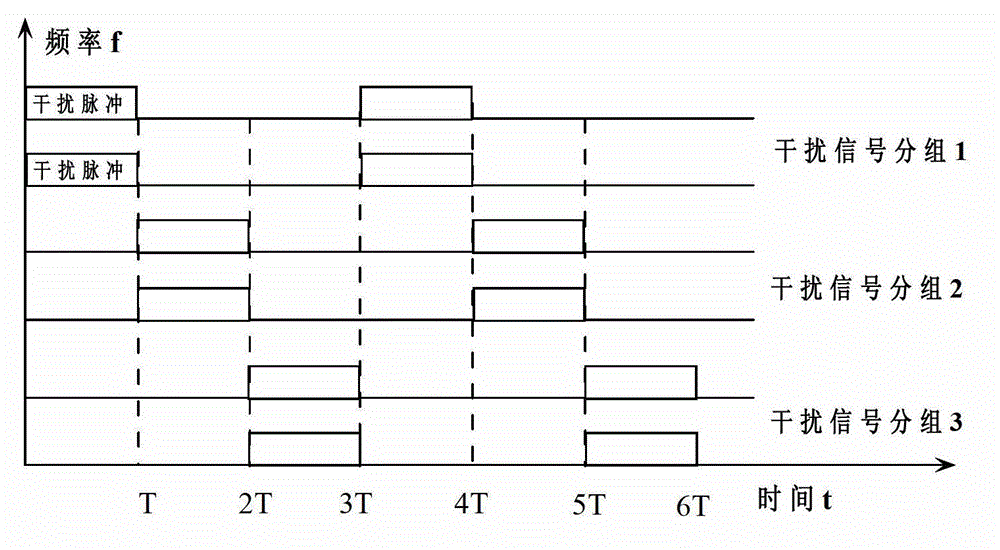Method for carrying out time-sharing group frequency point interference on multiple target signals
A technology of target signal and interference signal, applied in the direction of interference to communication, electrical components, etc., can solve the problem of not being able to allocate enough interference energy, and achieve the effect of reducing the envelope amplitude and improving the utilization rate
- Summary
- Abstract
- Description
- Claims
- Application Information
AI Technical Summary
Problems solved by technology
Method used
Image
Examples
Embodiment 1
[0082] Multiple GSM / CDMA2000 mobile communication network cells are used to interfere with periodic pulse interference signals with a duty cycle less than 1. Under the premise that the number and frequency of the target signal are known, the grouping configuration unit in the interference device is used to calculate and generate a time-sharing grouping scheme for interference signals. According to the scheme, the interference excitation unit generates periodic pulse interference signals with a duty cycle less than 1, for multiple GSM / CDMA2000 / WCDMA mobile communication network cell interferes, and the total effective interference signal quantity is greater than the instantaneous interference signal quantity. The effective interference duty cycle is 1:2 and 1:3, and the duration period is 1-10ms. If the number of interference signals is N, then the target signal whose number is less than or equal to 3N can be interfered.
Embodiment 2
[0084] Refer to image 3 . Take the target number of available frequency points as 30 (equal interval f 1 , F 2 ,..., f 30 ), the number of target signal frequency points that need to be interfered at the same time is 12 as an example, and the duty ratio required for interference is 1:3, then the 12 frequency points are first divided into 3 groups, 4 in each group. When grouping, follow the order of “equal interval→equal interval+1→pairwise equal interval→others” in the order of superiority and inferiority of envelope optimization results.
[0085] Refer to Figure 4 . The iterative operation of the group configuration unit performs the initial phase optimization on the possible combinations of each group of frequency points, and obtains the initial phase values corresponding to the optimal envelope of all frequency point combinations (that is, the envelope amplitude tends to the smallest), and establishes a data table. Data sheet format see Figure 4 , Where f 2 ~f 4 With f 1...
PUM
 Login to View More
Login to View More Abstract
Description
Claims
Application Information
 Login to View More
Login to View More - R&D
- Intellectual Property
- Life Sciences
- Materials
- Tech Scout
- Unparalleled Data Quality
- Higher Quality Content
- 60% Fewer Hallucinations
Browse by: Latest US Patents, China's latest patents, Technical Efficacy Thesaurus, Application Domain, Technology Topic, Popular Technical Reports.
© 2025 PatSnap. All rights reserved.Legal|Privacy policy|Modern Slavery Act Transparency Statement|Sitemap|About US| Contact US: help@patsnap.com



